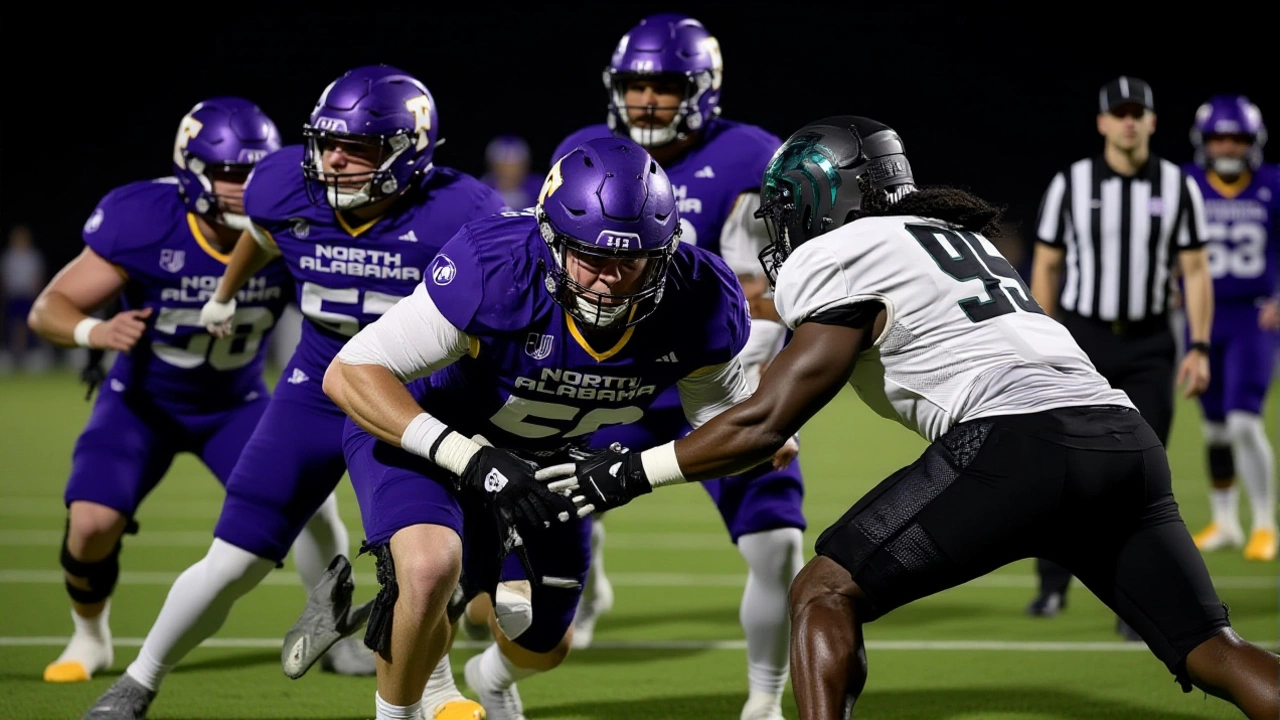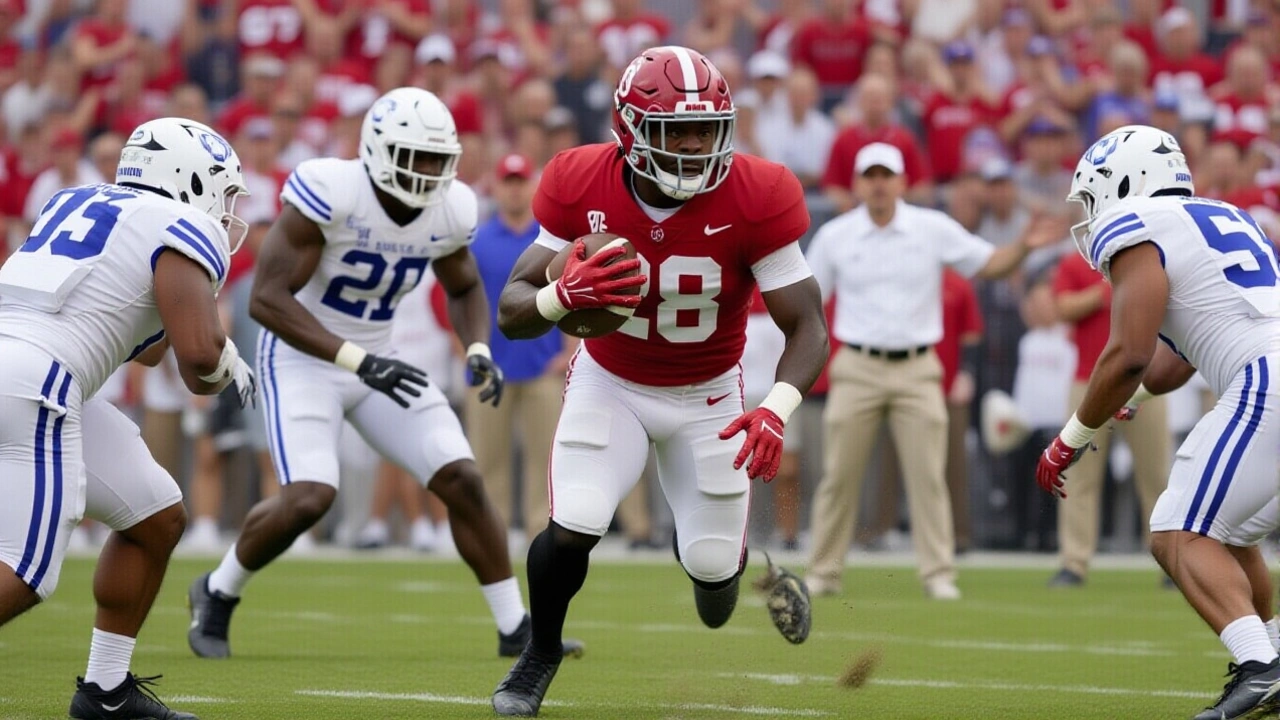The Alabama Crimson Tide didn’t just win—they obliterated. On November 22, 2025, at Bryant-Denny Stadium in Tuscaloosa, Alabama, the No. 10 Crimson Tide dismantled the Eastern Illinois Panthers 56-0 in a performance so one-sided it felt like a scrimmage. Eight rushing touchdowns. 539 total yards to Eastern Illinois’ 34. A shutout that wasn’t just impressive—it was historic. This wasn’t just a tune-up. It was a statement. And it came exactly when Alabama needed it most: one week before the Iron Bowl.
History Made on the Ground
Eight rushing touchdowns. The last time Alabama did that? November 10, 1979—against Vanderbilt. Nearly 46 years later, they matched it. And this time, it wasn’t one back carrying the load. Six different players crossed the goal line. Running backs Kevin Riley and AK Dear each had two. Austin Mack and Richard Young added more. The offense, which had averaged just 108.7 rushing yards per game this season—ranking 123rd nationally—exploded for 269 yards on the ground. That’s more than double their season average. And it wasn’t luck. It was execution. Coach Kalen DeBoer said afterward: "I think it’s always execution and just more reps. I thought they all ran hard and got their opportunities. Just trying to build on everything." The line didn’t just open holes—it carved canyons. Eastern Illinois’ defensive front, already outmanned as an FCS program facing an FBS powerhouse, looked lost. Alabama’s offensive line, often overlooked, was the unsung hero. They didn’t just block—they dominated. And when they did, the backs hit the holes like freight trains.Defense That Didn’t Let Up
If the offense was a sledgehammer, the defense was a guillotine. Alabama forced a turnover on Eastern Illinois’ first play from scrimmage. Dean Lee picked off quarterback Charles Kellom—yes, Kellom led the Panthers in rushing with 25 yards, but he was also 8-of-22 passing for 9 yards and an interception—and set up a 1-yard TD plunge by Jam Miller. On the next drive, a blocked punt led to another score. By halftime, Alabama had 28 points and had run 31 of 38 plays inside Eastern Illinois’ territory. The Panthers had 14 total rushing yards. Three sacks. Zero points. Zero momentum. Moses Alexander, Eastern Illinois’ senior linebacker, finished with 13 tackles—nearly half his team’s total. Teammate Tylan Foster hit 100 tackles on the season, a rare milestone for a player in a losing effort. Ja’Wuan Nickson, a Tuscaloosa native playing for the Panthers, had six tackles. You could feel the weight of the moment for him. He knew what this game meant. He knew what was coming next. For Alabama, it was a chance to rest. For Eastern Illinois, it was the end of a 3-9 season.Resting the Stars, Building the Bench
Alabama didn’t need their stars. So they sat them. Wide receiver Germie Bernard, offensive lineman Parker Brailsford, and defensive back Josh Cuevas didn’t play. Quarterback Ty Simpson started but was pulled after two interceptions. He still threw for 117 yards, but the focus was on the ground game. Austin Mack and Keelon Russell each led touchdown drives in the second half. Placekicker Conor Talty missed a 28-yard field goal—his first miss of the season—but it didn’t matter. No one was counting points anymore. They were counting reps. The bench players? They delivered. Williams Sanders, playing H-back, got a shoutout from the broadcast team for a key block on the opening drive. That’s the kind of play that doesn’t show up in the stat sheet but keeps the engine running. Coach DeBoer didn’t just want wins—he wanted depth. And against a team like Eastern Illinois, that’s exactly the kind of game to build it.
What This Means for the Iron Bowl
The Iron Bowl is next. Alabama vs. Auburn. The rivalry that stops the state. The game that can make or break a season. This win wasn’t about pride—it was about rhythm. After weeks of inconsistent rushing and offensive struggles, Alabama finally looked like the team they were projected to be. The offensive line looked cohesive. The backs looked confident. The defense looked hungry. Eastern Illinois’ head coach didn’t speak to reporters after the game. But Kayla Dbor, whose affiliation wasn’t specified, offered a quiet truth: "You can learn a lot from a loss." For the Panthers, it was the end of a long season. For Alabama, it was the final gear shift before the real test.Why This Matters Beyond the Box Score
This wasn’t just a blowout. It was a reset. Alabama’s offense had been sputtering. Their rushing attack was an afterthought. Now, suddenly, it’s the engine. The Iron Bowl isn’t just about beating Auburn—it’s about proving you’re ready to compete for a conference title, maybe even a national seed. And if you can run the ball with this kind of authority against an FCS team? You can run it against anyone. The numbers tell the story: 56-0. 539-34. Eight rushing touchdowns. 269 yards on the ground. But the real story? The players who got their chance. The linemen who dominated. The defense that never blinked. This game wasn’t about Eastern Illinois. It was about Alabama remembering who they are.Frequently Asked Questions
How does this performance impact Alabama’s chances in the Iron Bowl?
The 56-0 win restored confidence in Alabama’s rushing attack, which had ranked 123rd nationally before the game. With 269 rushing yards and eight touchdowns, the offense looks primed to control the clock against Auburn’s defense. If Alabama can sustain this ground game, they’ll neutralize Auburn’s pass rush and limit turnovers—key to winning the rivalry.
Why did Alabama rest key players like Germie Bernard and Parker Brailsford?
With the Iron Bowl looming, Alabama’s coaching staff prioritized player health and depth development. Bernard, Brailsford, and Cuevas are starters who’ve battled injuries this season. Resting them avoided unnecessary risk while giving backups like Mack and Russell valuable reps—critical if injuries strike in the rivalry game.
What’s the historical significance of eight rushing touchdowns?
Alabama’s last eight-rushing-TD game was November 10, 1979, against Vanderbilt—nearly 46 years ago. Only three times in program history has Alabama scored eight or more rushing TDs in a game. This performance ties them for the third-most in a single game ever, underscoring how dominant their ground game became in this matchup.
How did Eastern Illinois’ FCS status affect the outcome?
Eastern Illinois, an FCS team, operates with far fewer scholarships and resources than Alabama’s FBS program. They entered the game with a 3-9 record and were outmatched physically and athletically. While they played hard—led by Moses Alexander’s 13 tackles—the gap in talent, depth, and experience was too vast to overcome.
Who were the standout performers for Alabama besides the running backs?
Beyond Riley and Dear, offensive line play was crucial, and defensive back Dean Lee’s first-play interception set the tone. Linebacker Williams Sanders delivered key blocks, and the entire defensive unit held Eastern Illinois to just 14 rushing yards and 34 total yards—among the lowest totals in Alabama’s modern history.
What’s next for Eastern Illinois after this loss?
The Panthers finished the 2025 season 3-9, their fourth straight losing year. With senior leaders like Moses Alexander and Tylan Foster graduating, they’ll need to rebuild on both sides of the ball. Their next challenge: recruiting and developing depth to compete in the Missouri Valley Football Conference, where even mid-tier teams outclass them in physicality.
